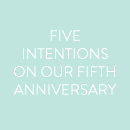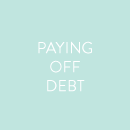11 April 2013
Friends! Have any of y’all experimented with our Google Doc budget? I would love to hear if you have! If you haven’t, though, or never intend to, that’s okay, too — I know it’s not for everyone! The key to sticking to a budget is finding a system that works for you, and so, as promised, I’m presenting another option today. Or rather, my dear friend Nancy Ray is presenting another option — the one she uses. Take it away, Nancy!
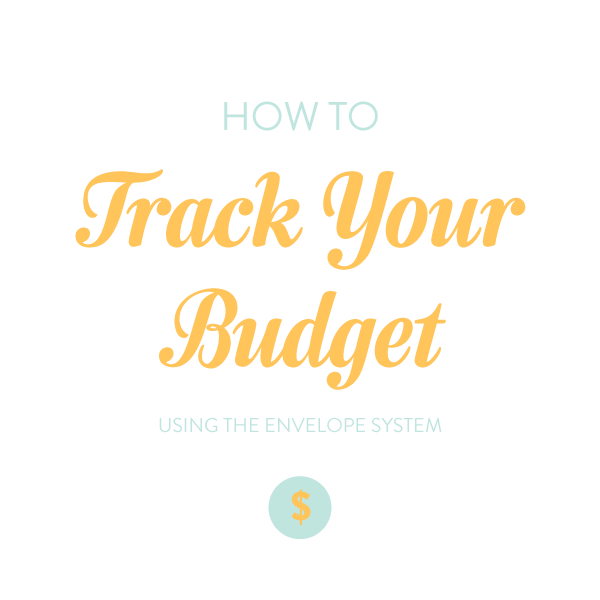
Hello friends! I’m excited to share, in my opinion, the most important key to our budgeting success. It’s called the Envelope System, and if you haven’t heard of it, just ask your grandma. She can probably explain it to you! Before the days of credit and debit cards (which really wasn’t too long ago), this was the most common and effective way to budget your money and give limits to your spending habits, and it’s the method recommended by Dave Ramsey, whom we’ve learned so much from. It works like this:
After making your monthly budget, you fill your labeled envelopes with the cash allotted for each specific category. When the money runs out, it runs out! This creates a physical limit on your spending, and it helps pace yourself throughout the month.
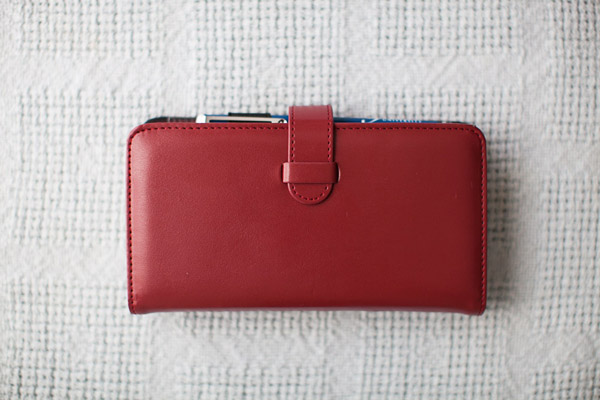
To better explain, here is an example of our current monthly Envelope System:
Food: $400
The food envelope is the amount allotted for all of our grocery shopping and eating out. Some couples like to separate the two categories into two different envelopes – that is completely up to you. (I like to challenge myself each month: If I have leftover money in the envelope, then we get to eat out!)
Household: $100
Household expenses include laundry detergent, lightbulbs, home repairs, paper towels, and other recurring household needs. We let this money “roll over” from month to month when we do not use it all, to cover the unexpected, more expensive repairs and needs that inevitably arise.
Auto Care: $60
The auto care envelope covers auto repairs, oil changes, tire replacements, car washes, etc. We allow this envelope to “roll over” as well, to build up cash for more expensive repairs.
Clothing: $60
The clothing envelope is only for clothes that are needed, not my fun shopping I-want-a-cute-new-dress money. For example: I can use the clothing envelope to purchase a new pair of running shoes because mine are worn out.
Blow Money: $160
We divide this money down the middle: Will gets $80, I get $80. This is our monthly “fun money” that we get to spend on whatever we want (i.e. my cute new dress.)
Gifts: $60
The gift envelope amount changes regularly, depending on what holidays and birthdays are on the calendar. Nothing is a surprise! We budget for Valentine’s Day, our families’ birthdays, and we start budgeting for Christmas in September!
Hair: $25
I don’t need a haircut monthly, but Will does. We allow the extras in this envelope to roll over and build up for my haircuts, while Will regularly takes out what is needed for his.
Date Night: $40
This is our newest envelope (and perhaps my favorite!). Setting aside time for us to simply be together, the date night envelope can be applied to a movie night, a restaurant, or maybe two date nights: pizza at home, and a casual dinner out.
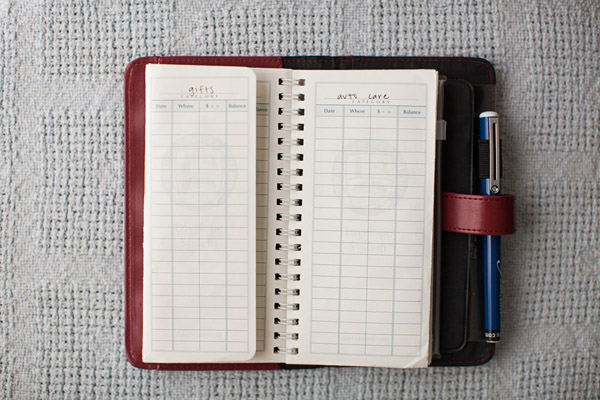
Other Envelope System Category Ideas:
– Restaurant/Eating Out Envelope
– Entertainment Envelope
– Social/Friends Envelope (for coffee/lunch dates)
– Furniture Envelope (if saving for a new piece of furniture)
– Vacation Envelope (if you want to keep it separate from your bank account)
Side note: When we were saving to pay off our house, we only got $40 each of blow money monthly. Also, there was only $240 in our food envelope, which is quite different from our current $400. The point is this: YOU decide what is fair in your household, according to your income, budget, and financial goals. Don’t get caught up in comparing my budget to yours. Do what works for you.
A few things to note before moving forward: This is not a picture of our entire budget – only the cash items within our budget. Notice that none of our bills (electricity, internet, etc.) show up in the Envelope System. That’s because we pay our bills online, electronically. So while they are still a part of our budget, they are not withdrawn in cash. Same with our gas money – we always use our debit card when filling up, and we keep track of our receipts and budget for it. Also, keep in mind that these amounts change on a monthly basis. For example: we hosted a dinner party for friends last month, so we allotted extra money in our Food envelope to cover that additional expense. The Envelope System exists to help you stick to your budget when spending can become all too easy, but it does not represent your entire monthly budget.
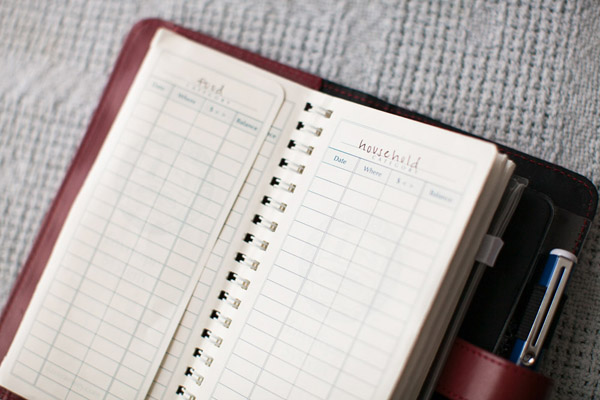
5 tips to make the Envelope System work for you:
1. Use cash-only categories: As I mentioned before, only use the envelope system for items you can pay for in cash.
2. Personalize it: When we first started using the Envelope System, we had a bajillion envelopes. I even made sub-categories for my blow money envelopes: my iPhone envelope, my curtains envelope. Just get to a system that is agreed upon in your household.
3. Fill the envelopes once or twice a month: I fill all of my envelopes in the beginning of the month to the max, but you might feel uncomfortable carrying around that much cash. You can fill them twice a month if needed – just choose something consistent and make sure you make a note in your budget.
4. Communicate with your spouse: This goes for your budget and your finances as a whole, but it’s good to talk through the envelopes and the remaining balances as you spend throughout the month.
5. Trash your receipts: I love this part of the envelope system. Because we can simply glance down and look at how much is left in each envelope, there isn’t a real need for keeping track of our receipts. It’s a good idea to keep track of them for the first few months, but once you get the hang of it, the envelopes eliminate your need to keep receipts.

So why is this system SO important to us? Why can’t you simply use your debit card and keep good records? I’m so glad you asked!
First of all, in my experience, it’s much more difficult emotionally to spend cash. It is often much easier to simply swipe your card and justify your purchase.
Second, this system sets a hard limit on your spending. You simply cannot purchase anything else when there is no more cash in the envelope! For visual people like me, this aspect is very helpful.
Lastly (and most importantly in my opinion), the Envelope System allows you to spend your money GUILT FREE! When you and your spouse have agreed on the amount of cash ahead of time, you can spend it responsibly, without worry. I used to have major guilt when spending any of my money, knowing that it could have or should have been spent on something else. But with a budget and an envelope system in place, you can freely spend what you’ve allotted with no guilt, knowing you are being responsible with your money.
Keep in mind it takes about three months to get the hang of this or any system, so don’t give up if it doesn’t work right away. But it is worth it, I promise. No matter my income or age, I will always use this system. I dare you to give it a try, and let me know what you think!
Thank you, Nancy!! Be sure to check out Mrs. Ray’s inspiring blog and beautiful images here!
2 April 2013
Today is the day! The day I’m going to walk you through exactly how John and I track our budget. By the end, you might think I’m a genius, or you might think I’m absolutely insane. Maybe we’ll take a poll :)
The reason I say that is because it is not the simplest system (at least on the surface), but it works very well for us. And that’s the point — if there’s one thing I’d like for you to take away from these posts, it’s to find a tracking system that works for you, and stick to it. It might take several tries to find a system that is aligned with your strengths and guards against your weaknesses, but once you find it, you’ll be golden. Seriously, if you can stick to a budget, I truly believe your life possibilities will expand rapidly in front of you.
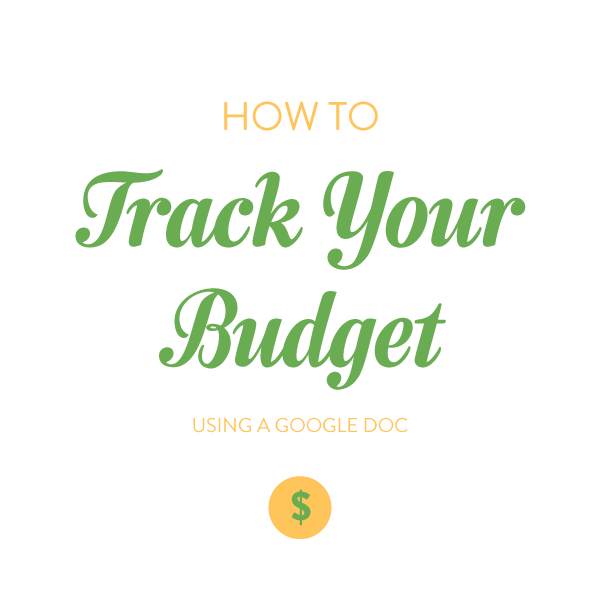
Alright, on with it. Our system was custom designed by John on Google Docs. (To give credit where credit is due, it was inspired by a budget Jenna’s husband designed.) Let’s start by laying out a few pros and cons of our system:
Good for someone who:
— is incentivized by saving
— is a more natural saver than spender / likes to know exactly where her money is going
— likes to look at spending data over time
Bad for someone who:
— does not have an interest in record keeping
— is prone to overspending
There are a LOT of moving parts to our budgeting system, but I’ll walk you through them. John has put together a dummy copy of our budget for you all to use if you’d like, and it will probably help to open that doc in another tab so you can reference it while you read. To start using our dummy doc for yourself, open the doc, click on File –> make a copy, rename it if you’d like, then click OK. Remember to MAKE A COPY before you start entering your info, or else you’ll be editing the original doc and everyone will see your info! :)
Our budget is made up of several sheets — 100, to be exact. I know that sounds like a TON, but bear with me! The doc starts out with a number of aggregate sheets, then goes into the Person 1 section, then the Person 2 section, then the Joint section.
The first sheet in the doc is the Income-Savings-Expense Sheet, or ISE for short. This helps us see the big picture of all of our moving parts at once, and how they interact with each other. We actually enter very little manually into the ISE — most of the data is fed in from other cells through formulas. There are also formulas built in so that when we get to the bottom, all of our income, savings, and expenses are automatically calculated. When we’re establishing our budget for the year, the goal is to have just a small surplus in the “remainder” cell. Feel free to adjust our categories for your needs, but make sure that every Expense category has its own corresponding sheet.
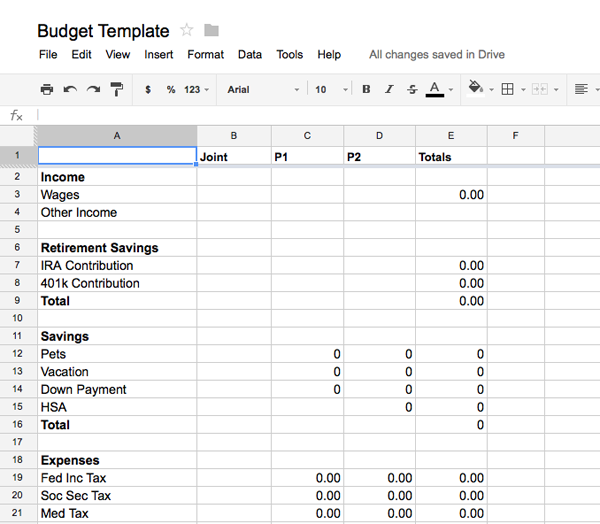
The next two sheets — Expenses Actual and Income Actual — are also important for an overall look at things. Expenses Actual pulls in data from all of the other sheets to show you how your actual spending is lining up to your budgeted spending. The sheet nicely totals the difference for you at the bottom, and puts you in the red if you’re over. John also built in bar graphs for an additional visual aid. Again, this sheet populates automatically based on formulas, so it’s just for you to look at.
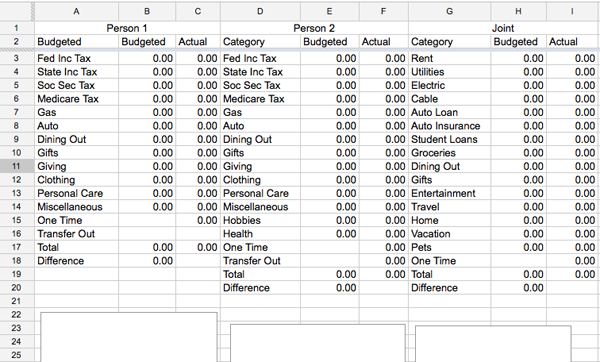
Income Actual shows you your actual income compared to your actual spending (a number drawn from the Expenses Actual sheet). Bar graphs are also included here. Again, all populated automatically. This is a (partially blurred out view) of our actual sheet:

You still with me? We’re through the most complicated parts!
Our next sheet takes us into the Emily, or Person 1 section of the budget. Across the top runs all of the categories my expenses fall into — things like gas, dining out, giving, and clothing. All of my taxes — federal, state, medicare, and social security — are accounted for here, as well as my savings contributions — currently, vacation, down payment, and kitties. This is where you’re telling your money where to go, so if you want it to go to savings, then that needs to be laid out in your budget.
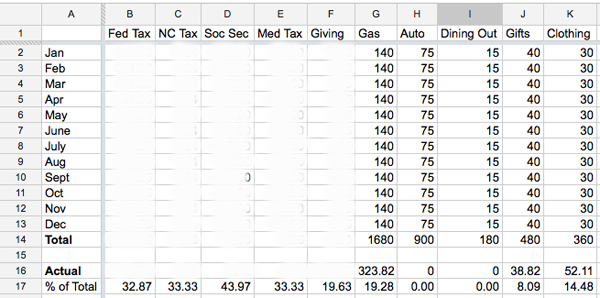
The total amount spent in each category for the year is totaled automatically by formula in the “Total” row. Beneath that, in the “Actual” row, the actual amount spent so far in the year is pulled from the individual budget sheets, and then beneath that, the percent of the total that’s been spent to date is calculated. So, you can see that I’ve spent $323.82 on gas so far this year, which is about 19% of my total budget of $1,680.
On to the next sheet, Person 1 Income. You don’t really need to worry about this sheet, because it will automatically populate from other sheets. Handy for showing what percentage of your income comes from what source (with the aid of a pie chart, of course).

Don’t mind all the little NUMS – that’s just showing that there’s a formula for the cell that’s currently empty, because there’s no data in the dummy doc yet.
The next five sheets — P1-Wages, P1-Interest, P1-Cap Gains, P1-Other Inc, and P1-Dividends — are where you’ll enter your income data throughout the year. For example, if you get a paycheck, you’ll enter it in the wages sheet. It’s important to note here that you need to enter your GROSS wages, not your NET wages, since you’ll later subtract things like taxes as an expense. If you don’t, for instance, have capital gains, then feel free to delete that sheet. We use Other Income for things like an unexpected birthday gift.
Whew! If you’re still with me, you’re going to be golden from here on out, because this is where it gets easy. And really, all of the above is easy to use in practice, it’s just hard to explain when I’m not sitting next to you and we’re not looking at real numbers. The bulk of the sheets are simply to record your expenses. You’ll want to customize these sheets to whatever your expense categories are.
The first four expense sheets are the items that are deducted from my paycheck every month — federal income tax, state income, social security, and medicare. For P2, we also have sheets for 401k, HSA, long term disability insurance, and life insurance. Obviously, feel free to add or subtract to customize things for your situation! If you’re not used to tracking these numbers, you should be able to find them on your pay stub.

Now is as good a time as any to explain the basic premise of our budget. Once you’ve set the amount to be spent in each budget category per year (in either your personal budget sheet or the joint budget sheet), the formulas will automatically divide that number by 365 to get the amount of money that accrues per day. The daily amount will add up in each sheet’s “Accrued” cell. Whenever you spend money (by entering the individual transactions in the date/amount/notes cells), the total amount of money spent will add up in the “Spent” cell. If Accrued – Spent is a positive number, then the text will be black; if it’s negative, it will be red. Instead of starting with $30 in my dining out budget, I start with nothing, and the amount in the budget grows day by day. Instead of diminishing, our budget grows!
Another element that’s key to our budget is that we almost NEVER pay with cash, because cash is hard to track (unless you’re incredibly diligent with your receipts). Checks, credit cards, and debit cards are easy to track. Obviously, credit cards must be paid off in full each month for this system to work; the subject of credit cards is deserving of a post in itself so I’ll leave it at that for now.
The remainder of the sheets in the P1 portion of the doc are for expenses that aren’t static, like gas, clothing, etc. Just enter these transactions as they happen. For example, this is what my gas sheet looks like right now:

Make sense? All of this repeats exactly for the Person 2 portion of the doc. If you’re a single person, just delete the P2 sheets and add the appropriate Joint expenses into your budget, too! Joint sheets follow the P2 sheets.
Here’s a brief rundown of my expense categories that aren’t immediately obvious:
Auto: Includes regular expenses like oil changes as well as irregular expenses like new tires or new brake pads. Since we never know what’s going to happen to our cars, we try to budget generously for this category, which means we often rack up a surplus.
Giving: Includes our pledge to our church as well as annual gifts to our college, donations to other charities, supplies for things like Operation Christmas Child, etc.
Personal Care: Includes toiletries, makeup, hair cuts, co-pays, contacts, etc.
Transfer Out: We enter our retirement account contributions here. We’re not actually “spending” them, but it’s money leaving our accounts that we’re making inaccessible for the moment, and we like to track where every dollar is going.
One Time: We use this for large, unexpected expenses that we’re paying for out of savings, not a yearly budgeted category. For example, in 2012 my one time expenses were the dress I rented for our friends’ wedding, my contribution to the house rental for my sister-in-law’s bachelorette, and John’s wedding present. Your one time expenses should be very rare, and not just a place to hide your non-sanctioned spending. As a rule of thumb, you should be able to count each year’s one time expenses on one hand.
Almost there!! The last two pages might be a little confusing, but for us, they have been one of the biggest financial motivators at our disposal. They are the Net Worth and the Net Worth Over Time sheets.
To use the Net Worth sheet, plan to take stock of your financial situation with your partner every two months or so. Put those dates on your calendar! On the designated days, go through every one of your accounts — checking, savings, student loans, car loans, IRAs, 401ks, HSAs, the works — and note the amount in each. For debts, note the outstanding amount (you can usually do this by signing into your online account or by calling your lender’s automated phone system).
After the formulas do some work for you, enter the required numbers — Assets, Liabilities, Net Worth, Net Worth ex Retirement — into the Net Worth Over Time sheet. Once you’ve been doing this for a few months, you’ll use your data to build a graph. Ideally the line will trend upward (if you’re gaining assets and shedding liabilities), which should provide even more inspiration to keep on the straight and narrow financial path! Here’s what our graph looks like since August 2012:
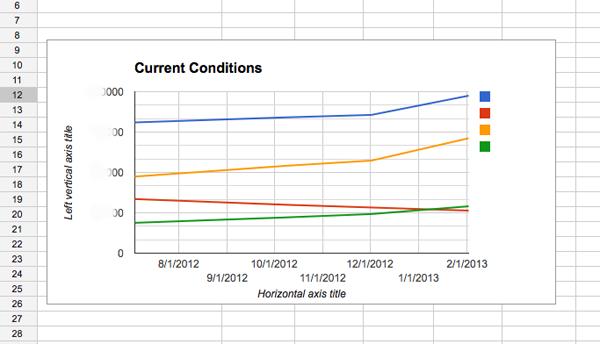
Friends! How are you feeling?? Have I totally confused you? Excited you? PLEASE let me know what you think and if you have any questions at all! There’s certainly more detail I could have added in, but this post was long enough already. Remember, you can access the dummy doc here!
And, take heart! If you don’t think this system is for you, a special friend will be visiting us next week to offer up another solution.
P.S. I would be COMPLETELY remiss not to acknowledge John here, who created our entire budget system, made the dummy doc for y’all, and diligently proofread this post to cut out the maximum amount of nonsense talk! He is truly marvelous!!
7 March 2013
We’ve had a nice little break from Marvelous Money posts (maybe to let the first three sink in?), but they’re back in action! I thought before we talked about ways to track a budget, it would be good to address saving money’s other half: spending money.

Yep, we’re talking about spending money today! [Keep in mind that we’re talking about spending money you’ve already budgeted for — I’m assuming you’ve already taken care of everything else in your budget (retirement, savings, etc.), and this is money you’re going to spend no matter what.] I firmly believe that how you spend your money is far more important than how much of it you have. Money can either be a powerful tool, or a source of endless frustration. I think the key to making money the former, and not the latter, is four-fold.
1. Figure out what you value. Sounds obvious, doesn’t it? We should spend money on things we value? We know this, but I think a lot of us don’t do it. The Starbucks example gets picked on a lot (you know, stop wasting money on your daily latte and brew coffee at home), but if the ritual of a morning cup of joe prepared especially for you truly makes you happy, then go for it! When you know what you value (whether it be security, family, convenience, heritage, adventure, and/or love), you will know exactly how you should spend your money in order to bring more joy into your life.
2. Buy more experiences and fewer material goods. John is a HUGE proponent of this strategy. And I think he’s right — people generally don’t reminisce about that great toaster they bought in the 90’s… they reminisce about the time they went to the Grand Canyon, or Aruba, or the mountains of North Carolina for a weekend away. Experiences take you out of your normal existence, they introduce you to new things, they make your life richer by having happened. In a phrase, they’re high impact spending. I also like that experiences bring joy even before they happen, as studies have shown that the largest boost in happiness around vacations comes from the simple act of planning a vacation. In the study, the effect of vacation anticipation boosted happiness for eight weeks!
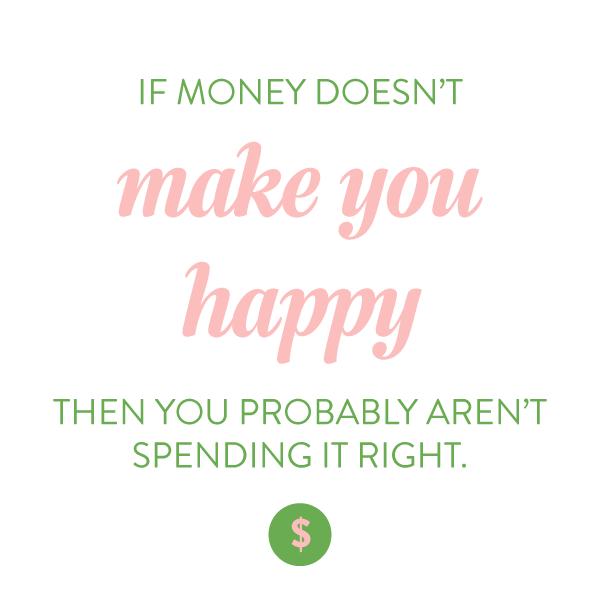
3. Use your money to benefit others rather than yourself. This is a lesson that comes with growing older, I think, as we learn that it really is better to give than to receive. There are few things that please me more than choosing and handing over the perfect gift for someone, something that I know will improve their life and make them happy. Likewise, even if you’re spending 100% in line with your values (see no. 1), if you’re spending only on yourself, it will eventually start to feel empty if you never consider others. This short video (watch it!!) really drives that point home. There are very few ways to spend money that would be more rewarding, don’t you think? As I Like Giving’s tagline says, living generously is a surefire way to spend your money without regret.
4. Appreciate what you have. No. 2 might be John’s favorite, but this one is mine. If you want to spend your money well, learn to cultivate gratitude for what you have, and for the things that you buy. Buying only what you truly love makes this very easy. You might think I’m joking, but not a week goes by when I don’t say to John, “Man, I love this couch!” Our couch was one of the first “big” items we purchased on our own, and we saved for MONTHS to afford it. I loved it then, and I love it now. If you only buy things that you love, it will be easier to feel grateful for what you have instead of resentful and guilty about the clutter that surrounds you.
What do you think, my friends? Which one of these spending strategies resonates most with you?
P.S. Marget passed me this article a while ago, and though I only read the abstract, its findings definitely rang true for me!
P.P.S. Please don’t think by my second graphic I mean you should find your happiness in the accumulation of wealth; far from it. I simply mean that your money should be a blessing to you, not a burden; if it feels like a burden, you’re probably not spending it right.
30 January 2013
I have followed a written budget for seven years now, and I can confidently say that it is the number one reason I feel at peace with my finances. I don’t worry about whether or not we’ll have enough money to pay our rent or car loans every month; I know we will. The headspace this surety frees up allows me to focus on my dreams and keeps me on track to reach my lifetime financial goals. There are few things better than that! I know you all are excited to talk budgeting, so let’s get cracking.
So what does it mean, exactly, to build a budget? Dave Ramsey likes to say that budgeting is “telling your money where to go.” I like that image. A budget helps me be purposeful about how I spend and save instead of just closing my eyes and hoping. While there are many ways to track a budget (some of which we’ll be covering in the next few weeks!), building a budget is pretty standard. It’s all about two things — income and expenses — which make up your cash flow.
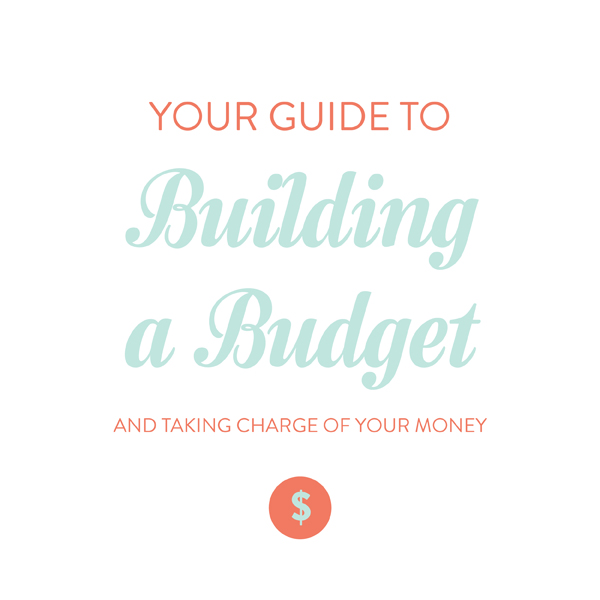
1. Calculate your monthly net income (your gross income minus taxes). For most of us, this is simply our paycheck.
2. Add up all of your fixed expenses. Fixed expenses are difficult or impossible to change and are the same (or roughly the same) every month: rent, utilities, your electric bill, student loans, car loan(s), auto insurance, health insurance, etc.
3. Calculate your monthly contribution to your financial goals. Like the experts say, pay yourself first. Put money into an emergency fund, reduce debt with extra payments, save for a down payment, save for retirement, and/or feed an investment account. If it’s a priority for you, include charitable giving in this step. Some people choose to do this as a percentage of their income (i.e. 10% for tithing), while others choose a set amount. Whatever you do, do not skip this step! Treat your savings like any other budget line item, not as something optional if there’s money left over.
4. Add up all of your variable expenses. Like the name implies, these are things that are not externally set, so you could, for example, cut back here if you wanted to move faster toward your goals. Examples include groceries, dining out, clothing, entertainment, gifts, travel, gas, personal care, etc.
5. Put it all together. When you subtract your fixed expenses, your contributions to your financial goals, and your variable expenses from your net income, there are three possible outcomes: you’ll either have a surplus, you’ll break even, or you’ll have a deficit. If you come out with a surplus, you can either save more or spend more (assuming you’re already saving the recommended amounts!). If you break even, perfect! If you have a deficit, it’s time to take another look at your figures (most likely your variable expenses), and adjust numbers until you’re in the clear. No more money “accidents,” people! By the time your budget is finished, every dollar will have a destination!
Easy to understand, a bit harder to follow in practice! But we’ll get to that soon enough. Your homework for the week: walk through these steps, and start calculating! If you’ve never made a budget before and are unsure how much to allocate for certain categories, I’d suggest looking back through last month’s expenses (maybe on a credit or debit card statement) and estimating from there. It might take a few months to get the balance across categories just right.
Next week, I’ll show you how John and I track our budget, and the week after that, we’ll have a special guest post on another tracking option!
Happy budgeting! And be sure to leave questions or tips in the comments!!




























